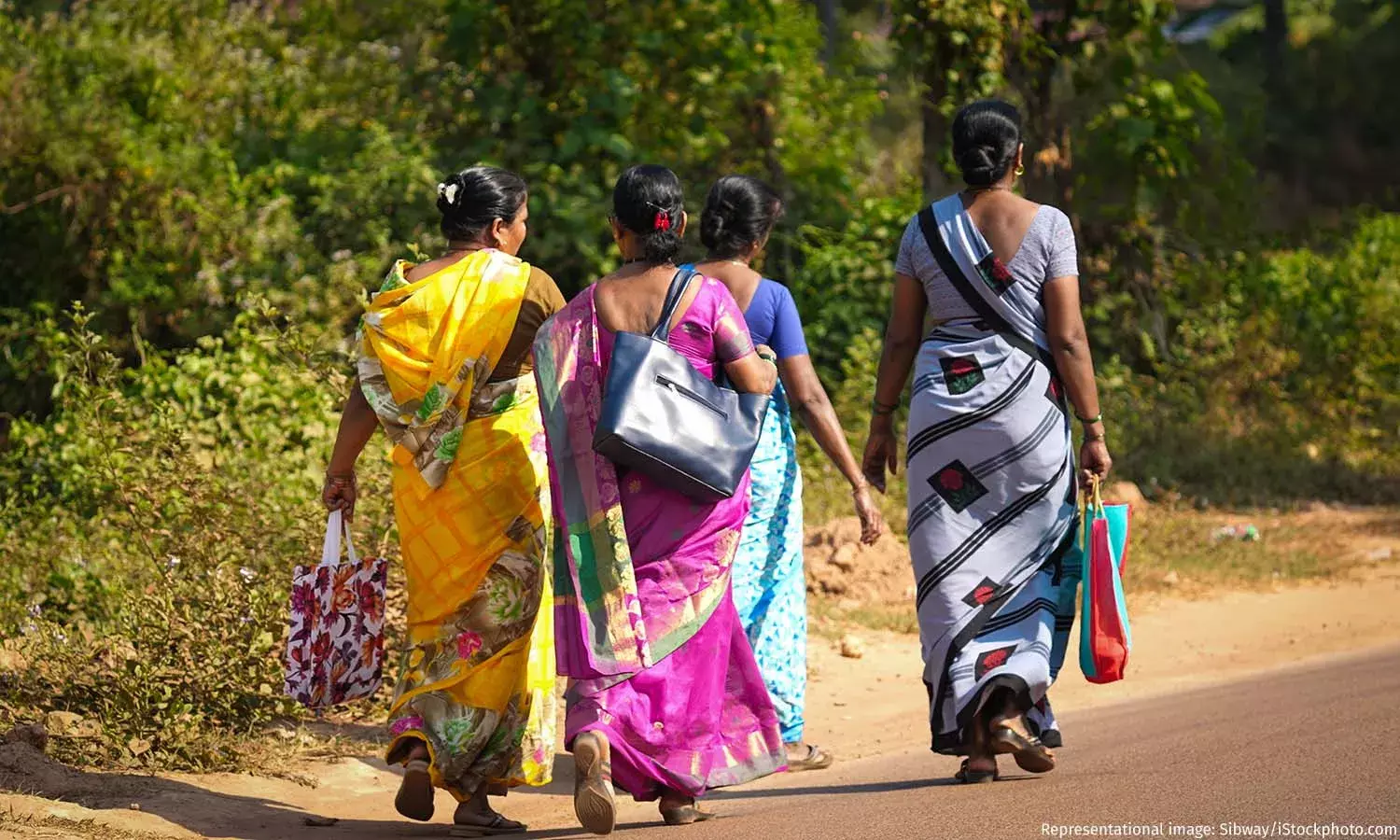India’s Gender Divide On Domestic & Care Work Is Deeper Than You Think
Indian men’s participation in domestic and caregiving work is concentrated in outdoor activities and playing with children, leaving the bulk of the associated mental and physical labour to the women

Thiruvananthapuram: Indian men spend less time on unpaid domestic and caregiving work compared to the women, and the little time they do spend is also concentrated in outdoor activities such as shopping, travelling, moving and transporting for family needs, and playing with children, an analysis of data from the Time Use Survey 2024 shows.
This leaves the bulk of caregiving and domestic work to the women, leaving little time for paid work or self-care, as IndiaSpend reported in January 2024. Women also undertake the bulk of mental labour associated with domestic work and care work, research shows.
Overall, women spend about 150% more time than men on domestic and caregiving services. When analysed per consumption levels, the participation of both men and women in domestic duties increased with higher levels of consumption, but the participation in caregiving work saw a decline.
Further, while participation levels are slightly higher among those employed in paid work, the average time spent on unpaid work is lower. Male participation was higher in the northeastern states and in Kerala, but lower in states such as Gujarat, Maharashtra and West Bengal.
In six charts, we analyse these patterns.
Indian women’s unpaid work plays a crucial role in sustaining economic activity, equivalent to 3.1% of GDP, we had reported in March 2019. However, much of the contribution goes unrecognised or is incorrectly measured, amounting to a “systemic transfer of hidden subsidies to the economy”
Globally, women, 15 years and above, spend 12.5 billion hours every day on unpaid care work, amounting to at least $10.8 trillion annually, an Oxfam report from January 2020 estimated, as IndiaSpend reported in April 2021.
Further, attitudes towards unpaid work persist. As many as 42% of women who failed to fetch water or firewood and 41% of women who failed to prepare meals for males in the family were physically beaten, found a 2019 survey by Oxfam across Bihar, Jharkhand, Uttar Pradesh and Chhattisgarh, we had reported. Many respondents also said it was acceptable to beat a woman if they failed at child care (33%) and if they failed to care for a dependent or ill adult member of the family (36%).
Men’s participation limited to outdoor activities
The Time Use Survey categorises domestic activities under major activity code 3, and caregiving under code 4. It further uses two-digit level classification to detail participation in specific activities.
An analysis of these data shows that male participation is predominantly in outdoor activities such as shopping and travelling for household members, followed by cooking and cleaning activities.
The participation of both men and women is less in ‘Household management for own final use’, which include organising activities and budgeting. Even so, the participation of men is lower.
In the case of caregiving work, as we said, male participation is concentrated in ‘childcare and instruction’. Further disaggregation shows that men’s participation is limited to physical care of children and playing with children, and they spend little time in ‘meetings and arrangements with schools and child care service providers’. Similarly, women’s participation is higher even in ‘minding children (passive care)’.
Overall, urban women participate more and spend more time on ‘instructing, teaching, training, helping children’ compared to men as well as rural women.
Up to 64% of women said they have no choice taking up care work, since there is ‘no other member to carry out the domestic duties’, the 68th round of the National Sample Survey found.
How wealth affects participation
Both in rural and urban areas, the participation rates for domestic services increase with economic progression, but the case for caregiving work is the opposite. The participation of the richest urban men was concentrated in preparation and cooking of food, our analysis shows.
Employed persons show higher participation rates
The participation rates have been recorded to be higher for the employed persons, but the average time spent on unpaid work is slightly lower, data show.
Further, the average time spent by women on employment-related activities was lower than that for men in both urban and rural areas.
Northeastern states see higher than average participation of men
Male participation in domestic activities is higher, as we said, in northeast India and states such as Kerala, while lower levels are seen in states such as Gujarat, Maharashtra and West Bengal. Similarly, caregiving work also has regional variations.
The low participation on 'caregiving activities' and those related to household management suggest the need for further analysis of data--a concern raised earlier by researchers.
We welcome feedback. Please write to respond@indiaspend.org. We reserve the right to edit responses for language and grammar.


